In October 2020, India and South Africa submitted to the World Trade Organization (WTO) a proposal for a waiver from certain provisions of the Trips agreement – the 1994 WTO Agreement on Trade-Related Aspects of Intellectual Property Rights. The rationale given for the waiver proposals was “for the prevention, containment and treatment of Covid-19”, and the proposed duration was “until widespread vaccination is in place globally, and the majority of the world’s population has developed immunity” (IP/C/W/669).
A revised proposal co-sponsored by 62 countries was submitted on 25 May 2021 (IP/C/W/669/Rev.1), asking that some Trips obligations be waived “in relation to health products and technologies including diagnostics, therapeutics, vaccines, medical devices, personal protective equipment, their materials or components, and their methods and means of manufacture for the prevention, treatment or containment of COVID-19.” It also specifies that such a waiver should be in force for at least three years. On 29 September 2021 the co-sponsors circulated a summary of their interventions (IP/C/W/684). In March 2022 an agreement remains to be reached as to “whether a waiver is the appropriate and most effective way to address the shortage and inequitable distribution of and access to vaccines and other COVID-related products.” In its ‘Response to the COVID-19 pandemic’, dated 6 January 2022, the World Trade Organization stated that “all [WTO] delegations remain committed to the common goal of providing timely and secure access to high-quality, safe, efficacious and affordable vaccines and medicines for all”, and discussions on how to implement this continue.
“What would the world be like today if the ancient civilisations had patented the rules of mathematics, like we are now patenting algorithms?”
The scenario is logistically and politically extremely complex, but the ongoing impasse between petitioning nations seeking access to information they hope can help protect the health and lives of their citizens, and the principles of intellectual property rights defended by the Trips agreement raises some very basic questions about the whole philosophy underlying the patenting system. Do intellectual property rights encourage or discourage innovation? Should we openly share information and knowledge we have generated for free? And, if so, who is going to fund research and pay researchers for their work?
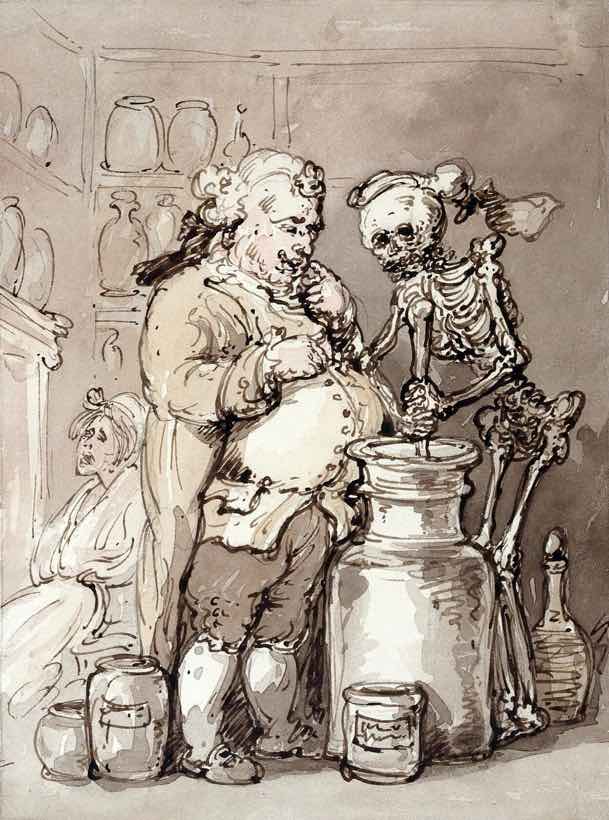
On the other hand, we could also ask ourselves questions such as: “What would the world be like today if the ancient civilisations had patented the rules of mathematics, like we are now patenting algorithms?”, a point raised by legal philosopher Peter Drahos, an expert on intellectual property (IP), and author of A Philosophy of Intellectual Property and other works exploring the relationship between IP and trade.
The Covid-19 pandemic has been a catalyst for change in almost every aspect of our lives, from the personal to the legislative. It has brought under scrutiny not one but numerous ‘elephants in the room’, in the areas of healthcare, work, economy, education and national and international law. One of the most delicate and intricate subjects brought to public attention has been that of intellectual property, and specifically pharmaceutical patents.
Intellectual property rights through time
Copyright
The concept of ownership makes intuitive sense in relation to most physical goods – albeit with certain complexities, clauses and caveats. If I own an object and someone steals it from me, I do not have that object anymore, but it still belongs to me, and if found by the police it is returned to me. Ownership of creative works of literature has likewise long been a recognised concept. If I write a novel – I can assert copyright. If someone falsely claims they are the author, it is my personality, my labour, my time, my finance, my honour or status in society that they are trying to steal. In the field of literature, this kind of ‘copyright theft’ has been acknowledged for thousands of years.
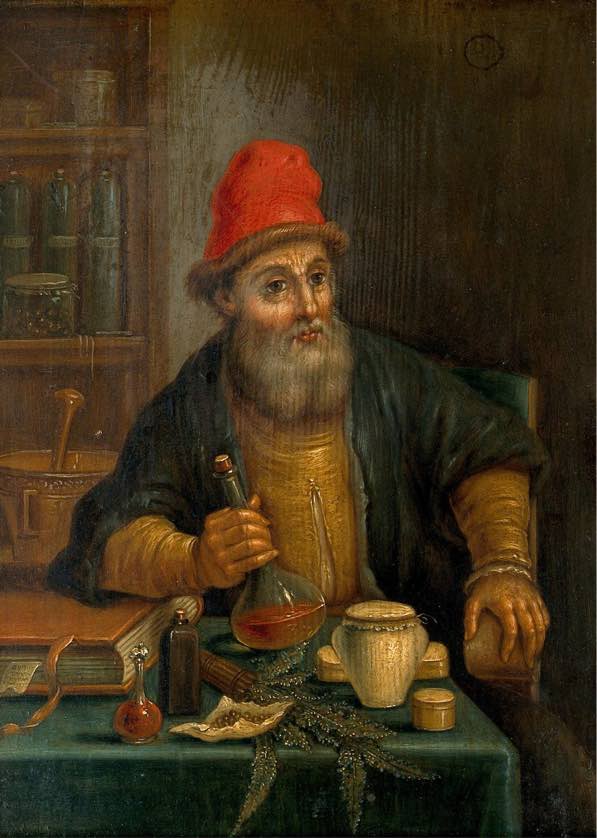
Greek and Roman poets often opened their works with an invocation to the Muses, the goddesses who inspired man’s creativity, proclaiming themselves recipients of some kind of divine gift. But this religious belief did not stop them from having strong opinions about intellectual property. Ancient critics made a distinction between imitation of earlier writers, which was seen as acceptable, even admirable, and pedestrian copying, which they defined as theft (Greek klopè, Latin furtum). The term ‘plagiarism’, which is still in use today, first appeared in the context of intellectual property theft in the Epigrams by Martial, a Roman poet from the 1st century CE, who repeatedly accuses a number of fellow poets of being ‘plagiarii’– literally kidnappers – of his work. But even back then, the phenomenon of misappropriation was not new. In the 6th century BCE, Theognis of Megara spoke of putting a seal on his verses to protect them from pilfering (lines 19-23) “…let a seal (sphregis) be placed by me as I practice my art upon these words, so that they will never be stolen without detection, and no one will substitute something inferior for the good that is there…” We do not know exactly what this seal consisted of – on the other hand, we do know that it did not work.
Although a common practice in the ancient world, plagiarism was frowned upon, and many dissertations on literary theft were produced (see for instance the list given by Porphyry in Eusebius, Praeparatio Evangelica, 10.3.12). In his De Architectura, Vitruvius (c. 80–70 – c. 15 BCE) declares that those who steal from and do wrong to the original authors “deserve not merely to be blamed, but to be sentenced to actual punishment for their wicked course of life.” He approvingly recounts that, in one of the literary contests established by King Ptolemy (367–283 BCE), a group of poets were found guilty of theft, condemned, and sent off in disgrace. At the same time Vitruvius is grateful that the ancients “transmitted their thoughts to posterity by recording them in treatises,” so that we can share and build on their discoveries. In his books on law, the Roman jurist Gaius (2nd century CE) makes a distinction between corporeal and incorporeal property (tangibles and intangibles, in modern law), and specifies that if a dispute arises over the physical possession of a written paper or painted canvas, the writer or artist can sue for compensation the owner of the substrate.
Patents
Copyright, of course, is not the only form of intellectual property. There are also patents, trademarks, trade secrets and design. Signatures of potters and painters are found on Greek vases from 700 BCE and potters’ marks were common in Ancient Egypt. They were possibly an equivalent of trademarks, a ‘logo’ that signified quality and influenced buyers.
Ancient Greeks wrote extensively on mechanics, with instructions and illustrations. The idea was to share and learn from one another
Ancient Greek inventors wrote extensively on mechanics, with instructions and illustrations for building their devices. The idea was that of sharing, of learning from one another, as Vitruvius claims should be done. We do not know if there was any form of protection for such discoveries, although we do know that one of the best-known inventors, Ctesibius (285–222 BCE), was practically destitute – which seems to indicate there were no special benefits in place for his work.
However, we also find an isolated and most interesting case of something similar to a patent, the first example recorded in history. According to the historian Phylarcus (Athenaeus, Deipnosophistae, XII.20) in the Greek colony of Sybaris, (6th century BCE), if a chef invented a new and excellent dish, no one else was allowed to make it for a year, and during that time the inventor was entitled to all the profit deriving from its manufacture. This, we are told, was “in order that others might be induced to labour at excelling in such pursuits.”
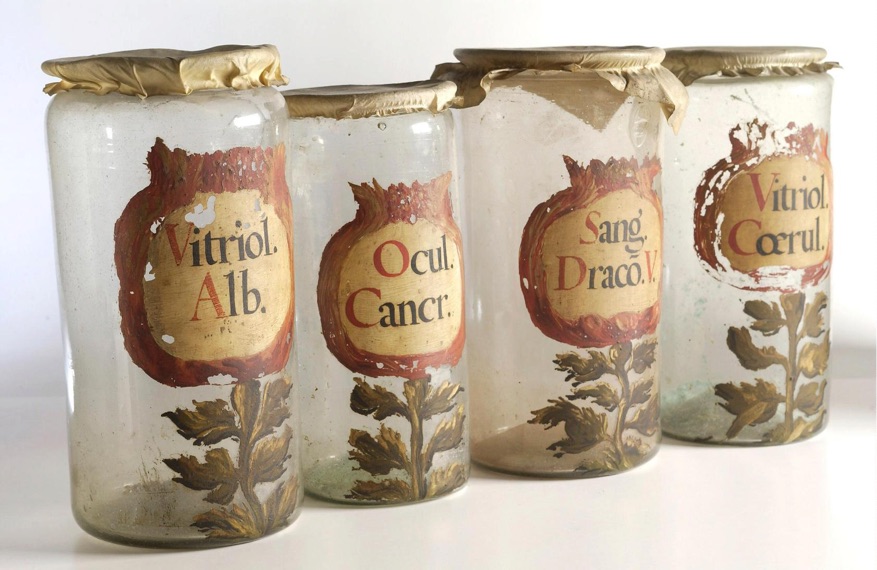
The Sybarites had a reputation for hedonism and hyperbolic displays of luxury, and the recipe monopoly story is recounted within the context of their extravagant behaviours. Although no judgement is openly made, one might evince that there was not much support for such concept. Interestingly, this first example of legal protection of an invention already contains the key prerequisites that we see in modern patent law: novelty, utility, and limited duration. It also shows that the intention behind patents is supposed to be that of encouraging creativity and innovation.
It shows that the intention behind patents is supposed to be that of encouraging creativity and innovation
In the Middle Ages privileges were granted by the authorities of various states, giving the recipient an exclusive right to exploit something permanently or for a limited time. They were given to attract new skills or as political favours. Guilds and corporations played an important role in the development of modern patent laws. They controlled trades and standards and could even enforce local monopolies. They enjoyed special privileges, granted in ‘letters patent’ (open letters, a form of public declaration) by heads of state. With the expansion of trade, movement of people and growing pace of innovation, the Renaissance needed better and more consistent solutions.
The first recorded example of a modern form of patent for an invention was granted by the city-state of Florence in 1421 to the architect and engineer Filippo Brunelleschi. Brunelleschi had invented a means for transporting marble blocks up the Arno River for the construction of the dome of the Florence cathedral. The boat design was called ‘Il Badalone’, probably meaning ‘The Giant’. The grant gave Brunelleschi exclusive rights to his design for three years and stated that if anybody built a copy of his vessel, it would be destroyed by fire. The Badalone encountered some functional hiccup during the trip, and the marble was lost in the Arno waters, but that is another story.
In England, first recorded patent was granted in 1449 by King Henry VI to the Flemish glassmaker John of Utynam, which gave the craftsman a 20-year monopoly on producing stained glass.
The first patent laws
Intellectual property rights debates seem to be inextricably linked to information revolutions. Hand-written books sparked the contention over tangible and intangible assets in the Greek and Roman world, while the movable-type printing press introduced in Europe by Johannes Gutenberg, c.1440, brought one of the most dramatic changes in human history. The new craft and trade of book printing was most likely the backdrop against which Venice – the great centre for art, trade, and innovation – penned the first patent law, which in many ways provides the foundation of modern international patent acts.
Although based on prior customs and pre-existing principles, the Venetian Act of 1474 is considered a milestone, as it was the first attempt to apply general rules to the granting of patents. It also made clear that patents should not be granted on the basis of the relationship between petitioner and authorities, but directly to the inventor “of any new and ingenious contrivance”, as long as it was useful. The inventor had to notify the State Judicial Office, and the patent was valid for ten years.
What was promulgated in 1474 by the Venetian Senate can be considered the oldest decree on technological patents, extending the protection of the law to the intellectual property of every “work and artifice” whose novelty and usefulness had been recognized.
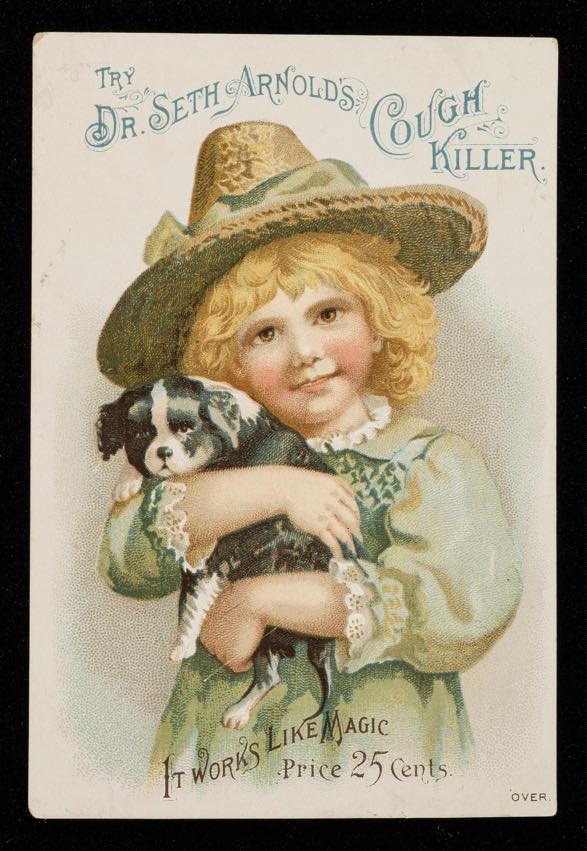
This resulted in the double advantage of knowing and promoting technological development and being able to use it for expanding the economy of La Serenissima (the Republic of Venice).
A very extensive archival work has been recently published by Roberto Berveglieri a researcher who writes extensively on the history of patents and intellectual property with a special focus on Venice. Breveglieri’s in-depth research has revealed the exceptional number of over 2000 patents granted by the Senate of the Venetian Republic between 1474 and 1788, reconstructing the political rationale and the administrative procedure for granting licenses.
The need to establish a law that encouraged innovation and extended to foreign inventors was probably triggered by the new art of movable type printing. In 1469 Venice granted a five-year monopoly to the German Johan von Spyer who first introduced a Gutenberg-style printing method in the city. Ironically, what transformed Venice into one of the main capitals of the printing industry was Spyer’s death a few months later, which gave free rein to competition.
The criteria laid out by the Venetian statute were first introduced in England in the Statute of Monopolies some two hundred years later. Adopted in 1624, the Statute aimed to put a stop to the indiscriminate barrage of patents being bestowed by the royal court on commodities and pre-existing techniques, as a political favour. Patents over vinegar production, wine, salt, etc. were granted to powerful courtiers. One of them, Sir Edward Darcy, obtained a monopoly over the making and selling of playing cards, and allegedly even forced entry into people’s homes to seize illegally made decks. Public discontent mounted to the point where the entire system of patents needed to be revised, giving rise to the Statute of Monopolies.
In the US the rights of authors and inventors even became part of the Constitution of 1787
Other patent and copyright acts followed, such as the English Statute of Anne in 1710; in the US the rights of authors and inventors even became part of the Constitution of 1787. Article I, Section 8, Clause 8, states that the Congress shall have the power “To promote the progress of science and useful arts, by securing for limited times to authors and inventors the exclusive right to their respective writings and discoveries.”
Pharmaceutical patent laws: a special case
Although today patents, copyrights, trade secrets and design are still under the general umbrella of Intellectual Property, they are, or are supposed to be, clearly distinct, with their own specific set of laws. In the past these lines were often dangerously blurred. As pointed out by Adrian Johns in Piracy, the Intellectual Property Wars from Gutenberg to Gates, while false books can lead you astray and illegitimate patents can ruin you, fake medicines can kill.
Pharmaceutical patents do not just serve the purpose of financing research, they are also there to enable the process that results in a new cure. The process of drug approval is long, complex, and expensive. The manufacturer must submit a new drug application (NDA), supplying clinical data that demonstrates that it is safe and effective when used as directed. The average cost of pivotal efficacy trials was estimated at $19 million in 2015–2016. Trials go through three phases before receiving approval by the FDA, and the process might take 10 to 15 years.
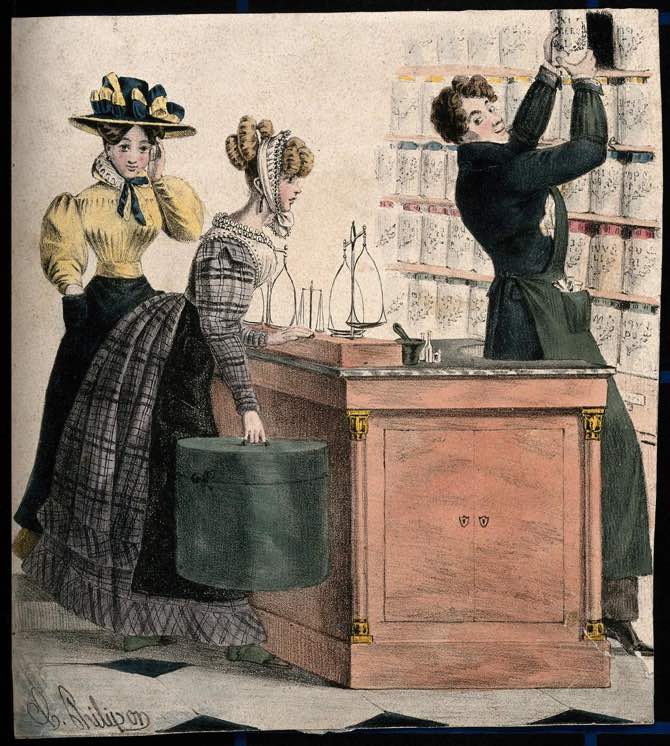
In ancient times, drugs were usually mixtures of mainly herbal and mineral ingredients, with the odd animal product, prepared directly by the physician, or by artisans under the physician’s supervision. The shops in which medicines were made and dispensed also stored and sold grains and other food products, such as peppers, wine, etc. – hence the medieval name ‘apothecary’, which derives from the Greek word for storeroom. In those days, while inspectors were sent to check on the production of drugs, they used the same criteria employed to check agricultural products – namely weight and appearance. Whether a drug did what it claimed to do was beyond the jurisdiction of inspectors, and it would remain that way for many centuries.
With the advent of the first newspapers, printers found a steady revenue in the advertising of drugs
It was the printing industry that played a pivotal role in the patenting of drugs and in the institution of drug quality control bodies. From the 16th century, books and medicines were often sold in the same shops, and with the advent of the first newspapers, printers found a steady revenue in the advertising of drugs. The ‘Father of Children’s Literature’, John Newbery (1713–1767), made his fortune by publishing children’s books, but also by advertising and selling medicines, including Dr James’ Fever Powder, a remedy used even by King George III. In The History of Little Goody Two-Shoes, first published by Newbery, little Margery’s father dies when “seized with a violent fever in a place where Dr James’ Powder was not to be had.”
The first medicinal patents
According to the British Royal Pharmaceutical Society and other sources, the first medicinal patent in England was for Epsom Salts. It was granted to a London physician, Nehemia Grew, in 1698. The patent was not for the ingredients but for the method of extracting salts (magnesium sulphate) from Epsom water, whose health benefits had been known about for a while. It was Grew who first identified and extracted its active ingredient. In 1679 the London physician read three papers at the Royal Society describing the preparation of salts, and sixteen years later published his treatise on the salts in Latin. But while on his way to financial success for the production and sales of the Epsom Salts, Grew became a victim of piracy on two fronts, both his written work and his product.
The perpetrators were two apothecaries, the brothers Francis and George Moult, sons of a London City grocer. They had found a way to extract larger quantities of Salt and could sell it cheaper. Furthermore, Francis translated Grew’s treatise into English without the author’s knowledge or permission, and added to the text this advertisement: “That this Salt is made and sold in Greater or Lesser Quantities, by Francis Moult, Chymist.” The bitter water of Epsom triggered a bitter legal dispute. An interesting aspect to this case is what it showed about the rift between doctors and pharmacists, which was getting wider and more antagonistic.
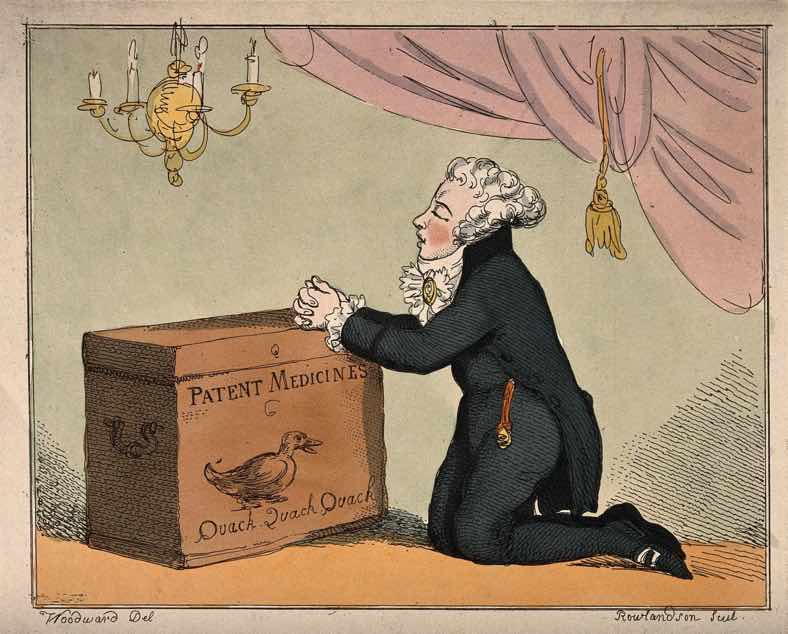
Thanks to the symbiotic relationship of medicines with printers and the expanding of newspapers distribution, many more drugs followed in the wake of the Epsom Salts. The Georgian era saw a proliferation of so-called patent medicines – remedies, nostrums, elixirs, syrups, that promised to cure everything, from upset stomachs, to dementia and arthritis. Some were made by reputable tradesmen, others by quacks, within an ebullient and unregulated market.
Popular remedies in England, beside Dr. James’s Fever Powder, included Turlington’s Balsam of Life, Bateman’s Pectoral Drops, and Hooper’s Female Pills, used for the “cure of disorders peculiarly incident to the female sex”. In the United States, English patent medicines were widely available, but the Americans soon developed their own. The first drug to receive a Letters Patent in America was Dr. Lee’s Windham Bilious Pills in 1796.
The second half of the 19th century saw a boom in the production and consumption of patent medicines, spurred on by aggressive marketing, through newspapers, samples, medicine shows, and adverts that appeared everywhere: horse carriages, walls, and even on packages of other products, such as sewing needles. It is generally agreed that modern advertising stems from this.
By 1858 around 1500 patent medicines were in circulation in America. Most of them did not really receive patents from the federal government, they were simply registered as trademarks. To obtain a patent meant to disclose the ingredients, and also prove novelty. Manufacturers kept their recipes secret, as most were made of just water and a few herbs, while others contained harmful substances, such as opium, alcohol, and cocaine.
Carbolic claimed that its drug would cure influenza, and if it did not, buyers would receive £100 compensation
There was also no restriction on the therapeutic benefits that these medicines could claim. For instance, the indications provided on the packaging of Dr. Flint’s Quaker Bitters include nervousness, catarrh, scrofulous, canker, pimples, dyspepsia, constipation, dizziness, piles, malaria, and more. But public discontent was brewing. One of the earliest legal cases of consumer protection is that of Carlill v. The Carbolic Smoke Ball Company in 1892. Carbolic claimed that its drug would cure influenza, and if it did not, buyers would receive £100 compensation. Louisa Carlill caught the ‘flu and claimed her £100 compensation. When sued, Carbolic argued that the offer was just a gimmick, but the court of appeal was not amused. Carlill won the case and lived happily ever after, until she died, 50 years later… from the ‘flu.
The birth of drug regulation
The ruthless advertising practices and the lack of regulation and disclosure over the ingredients led to growing criticism from the medical community, consumers, policy makers, and the media. From 1887 to 1902 the Division of Chemistry of the US Department of Agriculture, headed by its chief chemist Harvey Washington Wiley, conducted and published research into the adulteration and misbranding of food in the US.
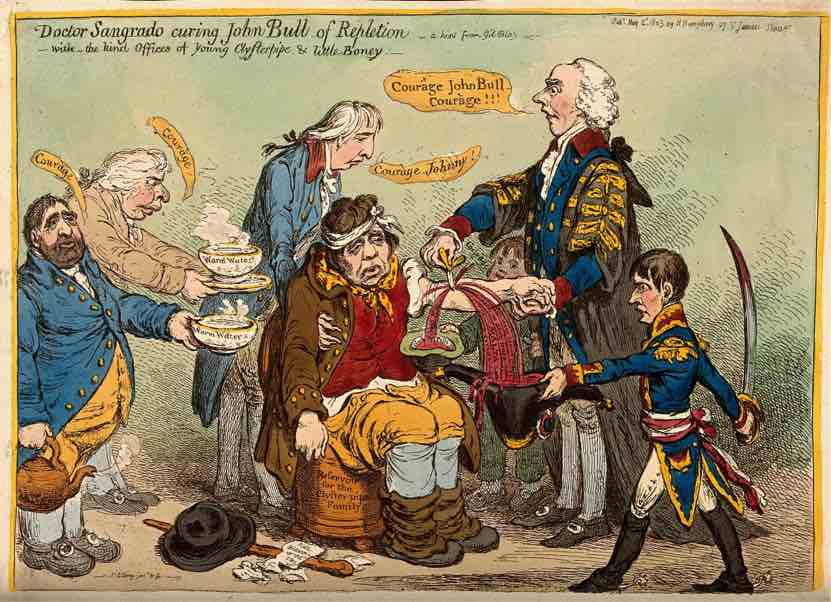
This was also the time of the muckrakers, proto-investigative journalists, writers, and photographers of the Progressive Era, who exposed political and economic corruption caused by big businesses. In 1905–1906 Collier’s Weekly ran a series of articles on the evil of patent medicines by Samuel Hopkins Adams entitled ‘The Great American Fraud’. 1906 also saw the publication of The Jungle, a novel by the muckraker Upton Beall Sinclair that exposed the horrific work and sanitary conditions in the American meatpacking industry.
Reports such as these spurred the government into action. In June 1906, President Theodore Roosevelt passed the Pure Food and Drug Act, for “Preventing the Manufacture, Sale, or Transportation of Adulterated or Misbranded or Poisonous or Deleterious Foods, Drugs, Medicines, and Liquors…” Initially the responsibility for examining food and drug quality was given to Wiley’s Bureau of Chemistry at the US Department of Agriculture, but in 1927 its regulatory powers were reorganised under the new Food, Drug, and Insecticide Organization. Three years later its name was shortened to the Food and Drug Administration – the FDA.
Pharmaceutical patents and the ‘next information revolution’
What does the future hold for intellectual property in general and for pharmaceutical patents specifically?
Information revolutions shake the very foundations of intangible property, its philosophy and the way in which creators are encouraged, protected and financially remunerated. In 1998 management consultant and writer Peter Drucker published an article in Forbes on The Next Information Revolution – referring to the one already under way. Contrasting it with the digital revolution, he said this is not “a revolution in technology, machinery, techniques, software, or speed. It is a revolution in CONCEPTS… The next information revolution asks: What is the MEANING of information, and what is its PURPOSE?… It is forcing us to redefine what business enterprise actually is and should be.”
“The next information revolution asks: What is the MEANING of information, and what is its PURPOSE?”
In the field of biomedicine, ‘information’ is now all about genetic data, which is opening up many philosophical and conceptual conversations about who owns and has the right to use that information and for what. These sorts of conversations will be fundamental to developing major projects such as the European Health Data Space. They will also be relevant, in a more specific and urgent way, to deliberations within the World Trade Organization about how to respond to the request submitted by 62 countries that the rights to exploit the intellectual property tied up in technologies used to prevent, contain and treat Covid-19 be set aside for the purpose of giving timely access to save lives and support health and quality of life across the globe.
With the collaboration of Francesca Albini, PhD












